-
 Bitcoin
Bitcoin $85,741.8041
-1.46% -
 Ethereum
Ethereum $2,357.0606
-2.48% -
 Tether USDt
Tether USDt $0.9989
0.02% -
 XRP
XRP $2.2067
-0.24% -
 BNB
BNB $609.2236
-0.55% -
 Solana
Solana $133.5023
-6.27% -
 USDC
USDC $0.9999
0.01% -
 Dogecoin
Dogecoin $0.2020
-1.38% -
 Cardano
Cardano $0.6561
-0.43% -
 TRON
TRON $0.2254
-0.43% -
 Chainlink
Chainlink $15.0818
2.06% -
 Litecoin
Litecoin $124.1308
11.20% -
 Avalanche
Avalanche $21.7247
2.58% -
 Sui
Sui $2.8470
1.14% -
 Stellar
Stellar $0.2860
2.09% -
 Toncoin
Toncoin $3.4747
-0.29% -
 UNUS SED LEO
UNUS SED LEO $9.0187
1.91% -
 Shiba Inu
Shiba Inu $0.0...01401
1.52% -
 Hedera
Hedera $0.1932
4.32% -
 Polkadot
Polkadot $4.7894
6.60% -
 MANTRA
MANTRA $7.3625
-4.21% -
 Hyperliquid
Hyperliquid $19.2871
-1.51% -
 Ethena USDe
Ethena USDe $0.9991
-0.02% -
 Bitcoin Cash
Bitcoin Cash $291.2665
2.45% -
 Dai
Dai $0.9996
0.02% -
 Bitget Token
Bitget Token $3.9465
-6.37% -
 Uniswap
Uniswap $7.8485
0.11% -
 Monero
Monero $215.8395
0.20% -
 NEAR Protocol
NEAR Protocol $2.9681
2.42% -
 Pepe
Pepe $0.0...07973
-0.83%
How to avoid slippage when buying and selling Stader (SD) coins?
While trading SD coins, it's important to set appropriate slippage tolerance to limit the difference between the intended and execution prices, especially during volatile market conditions.
Jan 01, 2025 at 10:25 am
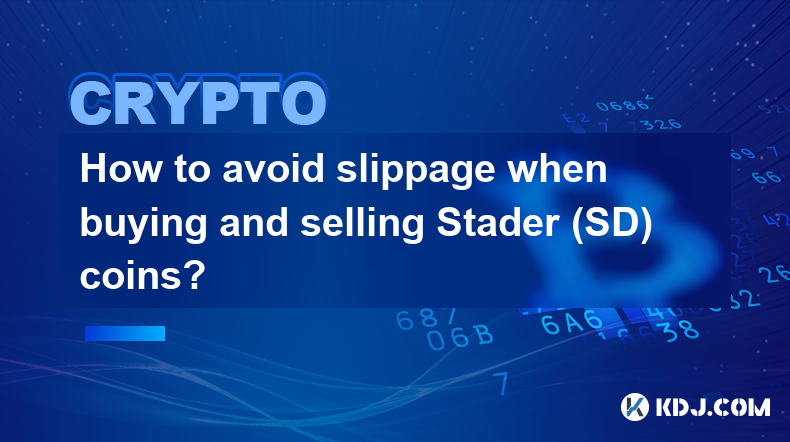
Key Points:
- Understand slippage and its causes
- Employ limit orders for precise pricing execution
- Leverage liquidity pools for efficient large-volume trades
- Monitor market volatility to anticipate price fluctuations
- Utilize slippage tolerance settings for controlled deviations
- Implement post-limit order monitoring to mitigate unexpected execution outcomes
How to Avoid Slippage When Buying and Selling Stader (SD) Coins
Understand Slippage and Its Causes
Slippage refers to the difference between the intended trade price and the actual execution price, typically occurring in volatile markets or during large-volume trades. Slippage arises from various factors, including:
- Market volatility: Extreme price swings can lead to changes in the quoted price before order execution.
- Order size: Large trades can impact market liquidity, potentially triggering price deviations due to the lack of available counterparties.
- Market depth: Thinly traded assets with limited liquidity increase the risk of slippage as the order may not be fully executed at the desired price.
Employ Limit Orders for Precise Pricing Execution
Limit orders allow traders to specify the maximum or minimum price at which they are willing to buy or sell. By placing a limit order, you set the price boundary and avoid slippage beyond that limit.
- Buy limit order: Execute a buy order only if the price drops to or below the specified limit price, ensuring the purchase at or below the desired rate.
- Sell limit order: Place a sell order with a limit price representing the minimum acceptable price. The order triggers only when the coin's price rises to or exceeds the limit, maximizing the potential profit.
Leverage Liquidity Pools for Efficient Large-Volume Trades
Liquidity pools, such as decentralized exchanges (DEXs) like Uniswap and Curve, offer deep liquidity that can facilitate large-volume trades with minimal slippage. These pools aggregate funds from liquidity providers, allowing traders to execute trades without relying on counterparties.
- Use centralized exchanges: Centralized exchanges typically provide higher liquidity than DEXs, but may impose fees or have other limitations.
- Consider DEXs with ample liquidity: Choose DEXs with deep liquidity pools specific to SD coins, ensuring efficient execution of large trades.
Monitor Market Volatility to Anticipate Price Fluctuations
Volatility plays a significant role in slippage, as sudden price swings can result in significant differences between intended and execution prices. To minimize slippage, it's crucial to monitor market conditions before placing an order:
- Check market charts: Study historical price movements of SD coins to gauge volatility patterns and identify potential price trends.
- Observe real-time market data: Use charting tools and market feeds to monitor current market activity and anticipate potential price fluctuations.
Utilize Slippage Tolerance Settings for Controlled Deviations
Some trading platforms allow users to set slippage tolerance, which represents the acceptable deviation from the intended trade price. By specifying a slippage tolerance, you limit the maximum allowable slippage, potentially reducing the risk of unexpected execution outcomes:
- Set appropriate slippage tolerance: Determine an acceptable deviation range based on market conditions and your risk tolerance.
- Consider zero-slippage tolerance for critical trades: For high-precision trades where slippage must be minimized, set the tolerance to zero.
Implement Post-Limit Order Monitoring to Mitigate Unexpected Execution Outcomes
After placing a limit order, actively monitor the market to ensure the order executes optimally. By tracking the order status and market conditions, you can make adjustments as needed:
- Track order status: Use trading platform dashboards or API calls to monitor the execution status of your limit orders.
- Cancel and replace orders: If market conditions change significantly, cancel the existing order and place a new one at a more favorable price.
FAQs:
Q1. What causes slippage in SD coin trading?
- Market volatility, order size, market depth, and exchange execution policies.
Q2. What is a limit order? How does it help avoid slippage?
- A limit order specifies the maximum or minimum execution price, helping to control slippage by protecting against price deviations beyond the limit.
Q3. How can I use liquidity pools to trade SD coins efficiently?
- By utilizing DEXs or centralized exchanges with deep liquidity pools, traders can access ample counterparties for large-volume trades, minimizing slippage.
Q4. Why is it important to monitor market volatility before trading SD coins?
- To anticipate price fluctuations and make informed decisions based on market conditions, reducing the risk of slippage.
Q5. How does slippage tolerance affect SD coin trades?
- Slippage tolerance allows traders to set acceptable deviations from the intended trade price, providing flexibility while limiting potential slippage losses.
Disclaimer:info@kdj.com
The information provided is not trading advice. kdj.com does not assume any responsibility for any investments made based on the information provided in this article. Cryptocurrencies are highly volatile and it is highly recommended that you invest with caution after thorough research!
If you believe that the content used on this website infringes your copyright, please contact us immediately (info@kdj.com) and we will delete it promptly.
- Pectra Upgrade Runs into Trouble on Ethereum Testnet
- 2025-02-27 01:55:31
- Hemi Network, a Modular Layer-2 Network Powered by Bitcoin and Ethereum, Is Launching Its Mainnet
- 2025-02-27 01:45:31
- Bitcoin (BTC) Struggles to Gain Momentum
- 2025-02-27 01:45:31
- PEPETO Up 1% in 7 Days But Investors Seek the Next 100x Memecoin
- 2025-02-27 01:45:31
- Bitcoin price falls to $86,099, wiping out almost $1.06 billion from crypto's market cap
- 2025-02-27 01:45:31
- Dawgz AI: The Soundest AI Crypto to Maximize Your Returns
- 2025-02-27 01:45:31
Related knowledge
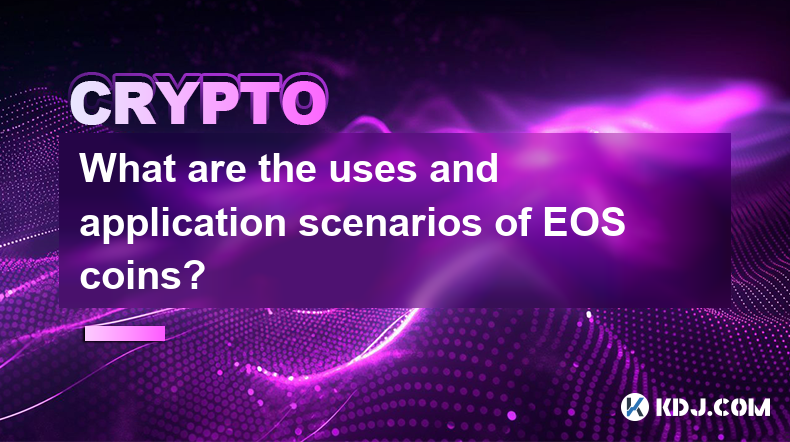
What are the uses and application scenarios of EOS coins?
Feb 26,2025 at 09:54pm
EOS: Decentralized Infrastructure for Scalable Blockchain ApplicationsKey Points:EOS enables the creation and deployment of decentralized applications with unparalleled scalability and efficiency.Its unique architecture features a high-throughput blockchain with zero transaction fees and the ability to process millions of transactions per second.EOS is ...
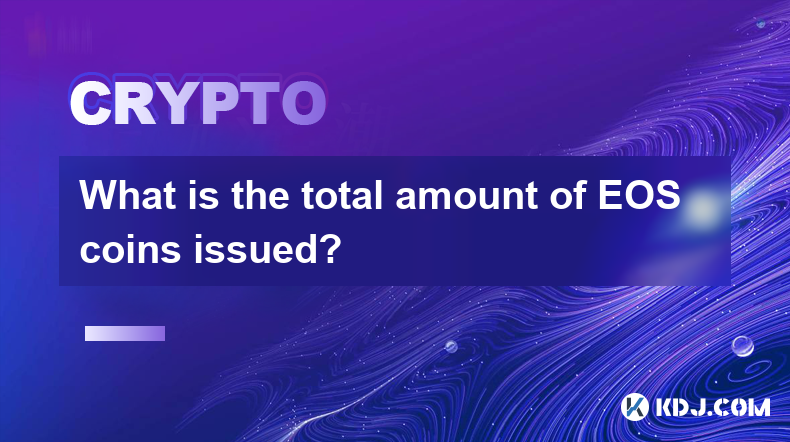
What is the total amount of EOS coins issued?
Feb 26,2025 at 06:24pm
Key PointsTotal Supply: Understand the concept of initial supply and its impact on EOS tokenomicsSupply Dynamics: Explore the various factors that affect EOS supply, including inflation and staking incentivesMarket Capitalization vs. Circulating Supply: Delve into the nuances between these metrics and their significance in token valuationDistribution an...
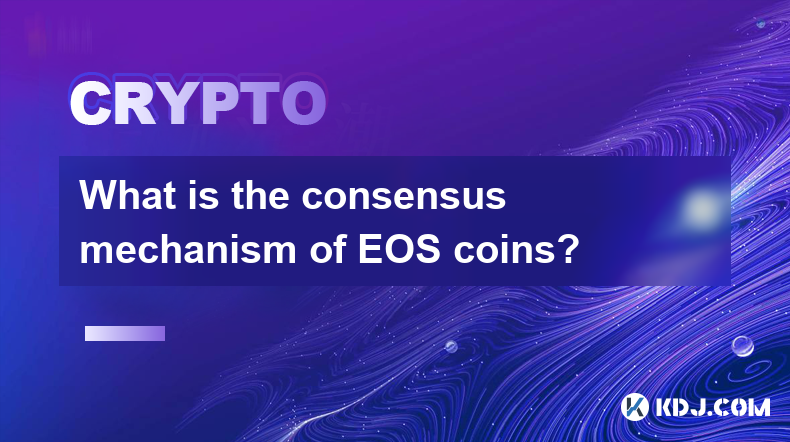
What is the consensus mechanism of EOS coins?
Feb 26,2025 at 11:19am
Key Points:EOSIO: The Foundation of EOS's Consensus MechanismDPOS: Delegated Proof-of-StakeBlock Producer ElectionsContinuous Block ProductionBlock Validation and IrreversibilityConsensus and Fork PreventionCommunity Governance and VotingWhat is the Consensus Mechanism of EOS Coins?EOS, an innovative blockchain platform, employs a unique consensus mecha...
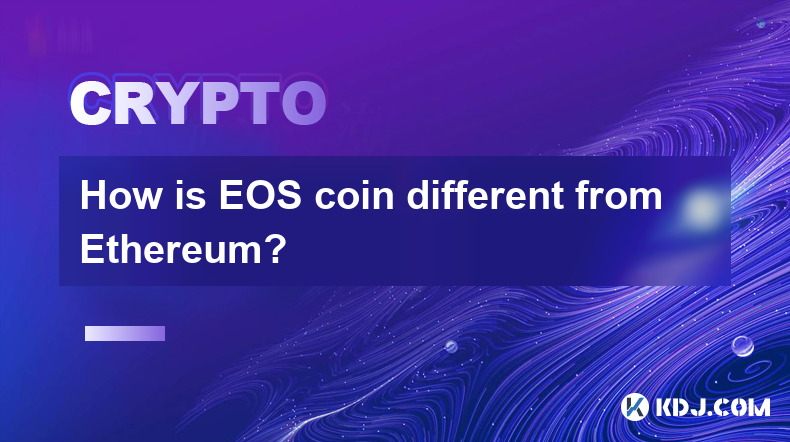
How is EOS coin different from Ethereum?
Feb 26,2025 at 10:48am
Key Points:Overview of EOS and EthereumDifferences in Consensus MechanismsAdvantages and Limitations of Each PlatformUse Cases and Target AudiencesComparison of Transaction Fees and ScalabilityCommunity Support and Development ActivityHow is EOS Coin Different from Ethereum?1. Overview of EOS and EthereumEOS and Ethereum are two of the most popular bloc...
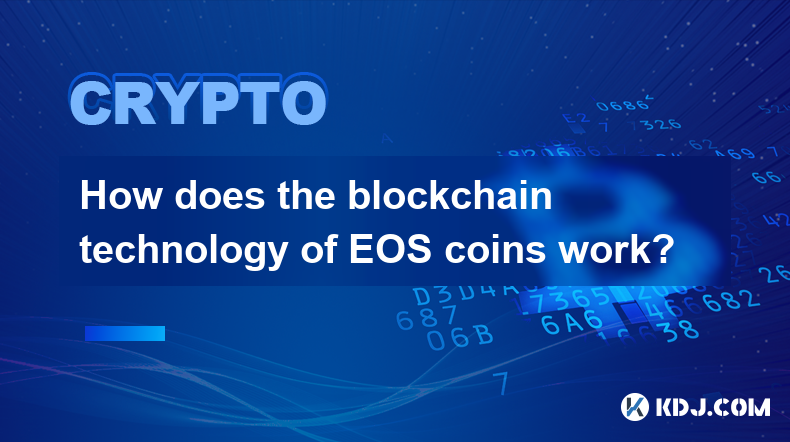
How does the blockchain technology of EOS coins work?
Feb 25,2025 at 11:13pm
Key PointsEOS is a blockchain platform that provides a high-throughput and scalable solution for decentralized applications.EOS uses a delegated proof-of-stake (DPoS) consensus mechanism to elect block producers and maintain the blockchain.EOSIO, the open-source software that powers EOS, offers a range of developer tools and features to facilitate the c...
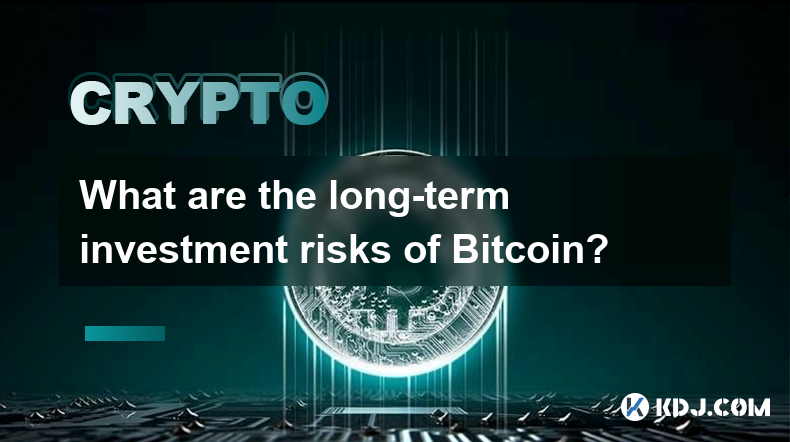
What are the long-term investment risks of Bitcoin?
Feb 22,2025 at 05:30pm
Key PointsVolatility and price fluctuationsRegulatory uncertaintySecurity risksCompetition from altcoinsMarket manipulation and scamsTransaction feesEnvironmental concernsLong-Term Investment Risks of BitcoinVolatility and Price FluctuationsBitcoin's high volatility is a double-edged sword. While it has the potential to generate substantial returns, it ...

What are the uses and application scenarios of EOS coins?
Feb 26,2025 at 09:54pm
EOS: Decentralized Infrastructure for Scalable Blockchain ApplicationsKey Points:EOS enables the creation and deployment of decentralized applications with unparalleled scalability and efficiency.Its unique architecture features a high-throughput blockchain with zero transaction fees and the ability to process millions of transactions per second.EOS is ...

What is the total amount of EOS coins issued?
Feb 26,2025 at 06:24pm
Key PointsTotal Supply: Understand the concept of initial supply and its impact on EOS tokenomicsSupply Dynamics: Explore the various factors that affect EOS supply, including inflation and staking incentivesMarket Capitalization vs. Circulating Supply: Delve into the nuances between these metrics and their significance in token valuationDistribution an...

What is the consensus mechanism of EOS coins?
Feb 26,2025 at 11:19am
Key Points:EOSIO: The Foundation of EOS's Consensus MechanismDPOS: Delegated Proof-of-StakeBlock Producer ElectionsContinuous Block ProductionBlock Validation and IrreversibilityConsensus and Fork PreventionCommunity Governance and VotingWhat is the Consensus Mechanism of EOS Coins?EOS, an innovative blockchain platform, employs a unique consensus mecha...

How is EOS coin different from Ethereum?
Feb 26,2025 at 10:48am
Key Points:Overview of EOS and EthereumDifferences in Consensus MechanismsAdvantages and Limitations of Each PlatformUse Cases and Target AudiencesComparison of Transaction Fees and ScalabilityCommunity Support and Development ActivityHow is EOS Coin Different from Ethereum?1. Overview of EOS and EthereumEOS and Ethereum are two of the most popular bloc...

How does the blockchain technology of EOS coins work?
Feb 25,2025 at 11:13pm
Key PointsEOS is a blockchain platform that provides a high-throughput and scalable solution for decentralized applications.EOS uses a delegated proof-of-stake (DPoS) consensus mechanism to elect block producers and maintain the blockchain.EOSIO, the open-source software that powers EOS, offers a range of developer tools and features to facilitate the c...

What are the long-term investment risks of Bitcoin?
Feb 22,2025 at 05:30pm
Key PointsVolatility and price fluctuationsRegulatory uncertaintySecurity risksCompetition from altcoinsMarket manipulation and scamsTransaction feesEnvironmental concernsLong-Term Investment Risks of BitcoinVolatility and Price FluctuationsBitcoin's high volatility is a double-edged sword. While it has the potential to generate substantial returns, it ...
See all articles

















































































